By John Treadwell Dunbar ——Bio and Archives--September 9, 2010
Travel | CFP Comments | Reader Friendly | Subscribe | Email Us
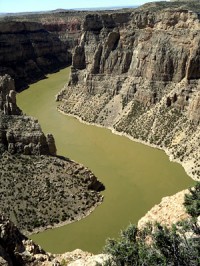 For those dismayed by the evergrowing crowds in Yellowstone, a sane alternative is the far northeast corner of the park and beyond where the mighty Absaroka and Beartooth Mountains soar to great heights. In particular, point your compass toward that spectacularly rugged and beautiful land enveloping the rustic old mining town of Cooke City, Montana. I’m not the only one who's had an affair with this isolated mountain kingdom. The late, great writer Ernest Hemingway was similarly captivated by the lofty peaks and narrow alpine valleys, spending a fair amount of time during the 1920s and 1930s drinking, writing, fishing the Clarks Fork River and hunting endangered species to the brink of extinction. But beware. This is not an amusement park. There are things out there that will eat you - alive.
For those dismayed by the evergrowing crowds in Yellowstone, a sane alternative is the far northeast corner of the park and beyond where the mighty Absaroka and Beartooth Mountains soar to great heights. In particular, point your compass toward that spectacularly rugged and beautiful land enveloping the rustic old mining town of Cooke City, Montana. I’m not the only one who's had an affair with this isolated mountain kingdom. The late, great writer Ernest Hemingway was similarly captivated by the lofty peaks and narrow alpine valleys, spending a fair amount of time during the 1920s and 1930s drinking, writing, fishing the Clarks Fork River and hunting endangered species to the brink of extinction. But beware. This is not an amusement park. There are things out there that will eat you - alive.
 Later in the summer during the early morning hours of July 28, 2010, at Soda Butte campground on the outskirts of Cooke City not that far from where we camped, a 216-pound grizzly sow accompanied by her three yearling cubs went on a feeding frenzy. Three tenters were attacked and mauled. One man and a woman survived, but 48-year-old Kevin Kammer was dragged out of his tent, ripped to shreds and partially consumed.
The investigating authorities are perplexed by this encounter because the unfortunate campers did nothing improper to bring on the attack. They maintained clean camps and stored their food properly. The animal, which was trapped and put down, showed no overt signs of starvation, and with the exception of an inordinate amount of parasites in her intestines, nothing indicated a predisposition to kill and feast. Like occasional stressed-out humans, maybe she just went crazy. At least two morals to this sad tale come to mind: think twice before you sleep in a tent in grizzly bear country overcrowded with humans and their enticing city-smells, and keep the bear spray handy.
Cooke City was comparatively small in its heyday as rowdy mining camps go. Prospecting for gold began in earnest around 1882 but petered-out not long after. The community remained a ghost town of sorts for 50 years until tourism, during winter and summer, breathed life back into the old log cabins and weather-battered wood structures that stood the test of time and the unrelenting elements. At its height Cooke City could boast of three general stores, a couple of smelters, two saw mills and its share of drinking establishments. It was a familiar pattern that repeated itself across the American West - they came, they mined, they lived hard and then they left. Today, around 300 summer residents call Cooke City home, but that quickly dwindles to 100 as the brutally harsh winters clamp down. Still accessible to the outside world during these bitter cold days and nights, it takes a special breed to tough these crackling extremes. You really must want to live here year-round. There’s no running off to Wal-Mart on a whim.
Later in the summer during the early morning hours of July 28, 2010, at Soda Butte campground on the outskirts of Cooke City not that far from where we camped, a 216-pound grizzly sow accompanied by her three yearling cubs went on a feeding frenzy. Three tenters were attacked and mauled. One man and a woman survived, but 48-year-old Kevin Kammer was dragged out of his tent, ripped to shreds and partially consumed.
The investigating authorities are perplexed by this encounter because the unfortunate campers did nothing improper to bring on the attack. They maintained clean camps and stored their food properly. The animal, which was trapped and put down, showed no overt signs of starvation, and with the exception of an inordinate amount of parasites in her intestines, nothing indicated a predisposition to kill and feast. Like occasional stressed-out humans, maybe she just went crazy. At least two morals to this sad tale come to mind: think twice before you sleep in a tent in grizzly bear country overcrowded with humans and their enticing city-smells, and keep the bear spray handy.
Cooke City was comparatively small in its heyday as rowdy mining camps go. Prospecting for gold began in earnest around 1882 but petered-out not long after. The community remained a ghost town of sorts for 50 years until tourism, during winter and summer, breathed life back into the old log cabins and weather-battered wood structures that stood the test of time and the unrelenting elements. At its height Cooke City could boast of three general stores, a couple of smelters, two saw mills and its share of drinking establishments. It was a familiar pattern that repeated itself across the American West - they came, they mined, they lived hard and then they left. Today, around 300 summer residents call Cooke City home, but that quickly dwindles to 100 as the brutally harsh winters clamp down. Still accessible to the outside world during these bitter cold days and nights, it takes a special breed to tough these crackling extremes. You really must want to live here year-round. There’s no running off to Wal-Mart on a whim.
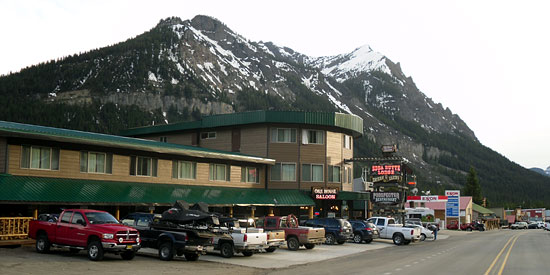 Hemingway (with wife Pauline and family) spent most of his time at the Nordquist’s L-Bar-T Ranch outside of Cooke City, and traversed that big, wild triangle between Cooke City, Cody, Wyoming and Red Lodge, Montana. He loved the raucous bars at Red Lodge. Portions of “A Farewell to Arms” (I think), “The Green Hills of Africa,” “Death in the Afternoon,” and “To Have and Have Not” were penned here. According to some of the locals, he also spent time at the Antlers Lodge and Cabins on Main Street.
Constructed of dark brown logs with contrasting white trim, the stout and low-slung Antlers Lodge was Cooke City’s first tourist facility. As for Hemingway having stayed there, why not? I’ll take their word for it. If you’re a Hemingway fan, stop by on your way through town and snap a few pictures. Better yet, spend a night in one of the cabins and imagine yourself sitting next to the young genius in front of the lodge’s roaring fireplace, yucking it up and tying one on. The owners are friendly and accommodating, and it’s a great home base for launching your adventure into Yellowstone National Park.
With some reluctance I’ll let you in on a big secret called Sunlight Basin. As you follow Highway 296 east of Cooke City - the Chief Joseph Scenic Highway - you’ll drive through one of Wyoming’s most scenic valleys. With spectacular views of pointy Pilot Peak, rocky canyons, the Cathedral Cliffs and Sunlight Gorge, all the way up winding switchbacks to the top of Dead Indian Summit, you’ll discover that some of the most outstanding terrain lies outside the park, and is brimming with Wild West history.
For generations untold, Indian war parties and hunting parties regularly climbed over the pass and moved through the basin in search of blood and beast. Buffalo, elk, deer and other migratory animals swarmed in vast numbers throughout the valley and east of Dead Indian, far out onto the plains and rolling, treeless open country with the red soil and sweeping green hills and fertile ranch lands.
Hemingway (with wife Pauline and family) spent most of his time at the Nordquist’s L-Bar-T Ranch outside of Cooke City, and traversed that big, wild triangle between Cooke City, Cody, Wyoming and Red Lodge, Montana. He loved the raucous bars at Red Lodge. Portions of “A Farewell to Arms” (I think), “The Green Hills of Africa,” “Death in the Afternoon,” and “To Have and Have Not” were penned here. According to some of the locals, he also spent time at the Antlers Lodge and Cabins on Main Street.
Constructed of dark brown logs with contrasting white trim, the stout and low-slung Antlers Lodge was Cooke City’s first tourist facility. As for Hemingway having stayed there, why not? I’ll take their word for it. If you’re a Hemingway fan, stop by on your way through town and snap a few pictures. Better yet, spend a night in one of the cabins and imagine yourself sitting next to the young genius in front of the lodge’s roaring fireplace, yucking it up and tying one on. The owners are friendly and accommodating, and it’s a great home base for launching your adventure into Yellowstone National Park.
With some reluctance I’ll let you in on a big secret called Sunlight Basin. As you follow Highway 296 east of Cooke City - the Chief Joseph Scenic Highway - you’ll drive through one of Wyoming’s most scenic valleys. With spectacular views of pointy Pilot Peak, rocky canyons, the Cathedral Cliffs and Sunlight Gorge, all the way up winding switchbacks to the top of Dead Indian Summit, you’ll discover that some of the most outstanding terrain lies outside the park, and is brimming with Wild West history.
For generations untold, Indian war parties and hunting parties regularly climbed over the pass and moved through the basin in search of blood and beast. Buffalo, elk, deer and other migratory animals swarmed in vast numbers throughout the valley and east of Dead Indian, far out onto the plains and rolling, treeless open country with the red soil and sweeping green hills and fertile ranch lands.
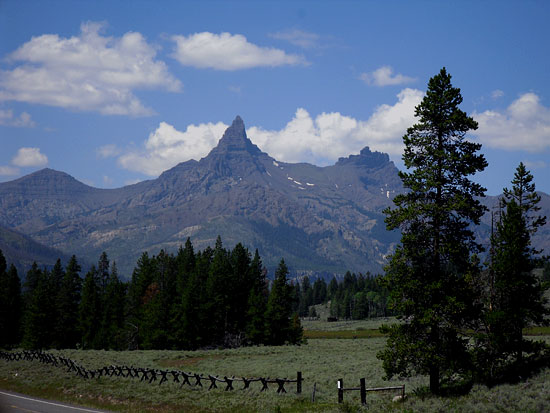 Following the Big Hole battle of 1877 near Lost Trail Pass on the Montana-Idaho border, Chief Joseph and his band of 1,000 Nez Perce Indians slogged through Sunlight Basin and over Dead Indian Summit as they attempted their 1,800-mile escape from the pursuing U.S. Cavalry. They didn’t make it and were eventually caught 30 miles shy of the Canadian border. A steady stream of miners also clambered over the narrow pass and up this gorgeous valley to the mining camps near Cooke City and Silver Gate, and self-sufficient homesteaders called the compositionally perfect basin with its steep ridges and fins and buttes, home.
The day we left camp and continued through Sunlight Basin on our way to the quintessential cowboy town of Cody, the winds blew cold and fierce. By the time we reached Dead Indian Summit and stepped out of the car it was all I could do to keep from being blown over the cliff. Everyone was caught off guard, the doors were nearly ripped off their hinges, and as we wound down the gentle eastern approach to the pass through rolling green cattle country, the big blow kept on blowing. The weather systems in this neck of the woods, like the occasionally unpredictable grizzly bear, can be unexpected, like this rolling series of turbulent cells that spun off tornadoes that ripped roofs off homes and tore apart the Rimrock Auto Arena in Billings just north of here.
We bumped and bounced down the road all the way to Cody where we found welcome respite from nature’s blast, the wind cut in half by the hundred-year-old brick and sandstone buildings that line the streets of this beautiful town of 9,000, and I’m not hyperbolizing. I wish more communities were like Cody. Situated near the east gate of Yellowstone National Park, it’s tourist-oriented in all the right places, clean, orderly, with a gregarious populace that lives in tree-lined residential enclaves and enjoys a relatively crime-free environment reminiscent of the good old days. It just looks decent, and folks are polite. Of course I pity them in winter when the sidewalks roll up and the tourists flee with their coveted dollars and cents. They suffer cold northern blasts that’ll peel the skin off your nose and make you long for the tropics. On the upside, it weeds out the wimps and Wild West Wannabes.
Following the Big Hole battle of 1877 near Lost Trail Pass on the Montana-Idaho border, Chief Joseph and his band of 1,000 Nez Perce Indians slogged through Sunlight Basin and over Dead Indian Summit as they attempted their 1,800-mile escape from the pursuing U.S. Cavalry. They didn’t make it and were eventually caught 30 miles shy of the Canadian border. A steady stream of miners also clambered over the narrow pass and up this gorgeous valley to the mining camps near Cooke City and Silver Gate, and self-sufficient homesteaders called the compositionally perfect basin with its steep ridges and fins and buttes, home.
The day we left camp and continued through Sunlight Basin on our way to the quintessential cowboy town of Cody, the winds blew cold and fierce. By the time we reached Dead Indian Summit and stepped out of the car it was all I could do to keep from being blown over the cliff. Everyone was caught off guard, the doors were nearly ripped off their hinges, and as we wound down the gentle eastern approach to the pass through rolling green cattle country, the big blow kept on blowing. The weather systems in this neck of the woods, like the occasionally unpredictable grizzly bear, can be unexpected, like this rolling series of turbulent cells that spun off tornadoes that ripped roofs off homes and tore apart the Rimrock Auto Arena in Billings just north of here.
We bumped and bounced down the road all the way to Cody where we found welcome respite from nature’s blast, the wind cut in half by the hundred-year-old brick and sandstone buildings that line the streets of this beautiful town of 9,000, and I’m not hyperbolizing. I wish more communities were like Cody. Situated near the east gate of Yellowstone National Park, it’s tourist-oriented in all the right places, clean, orderly, with a gregarious populace that lives in tree-lined residential enclaves and enjoys a relatively crime-free environment reminiscent of the good old days. It just looks decent, and folks are polite. Of course I pity them in winter when the sidewalks roll up and the tourists flee with their coveted dollars and cents. They suffer cold northern blasts that’ll peel the skin off your nose and make you long for the tropics. On the upside, it weeds out the wimps and Wild West Wannabes.
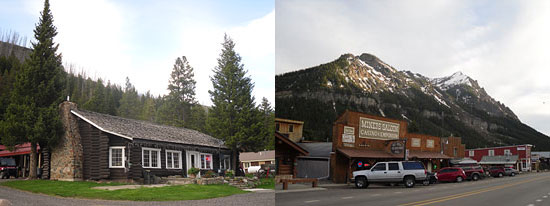 As the saying goes, Cody is rodeo. It bills itself as the Rodeo Capital of the World with nightly events held all summer long. The Buffalo Bill Cody Stampede Rodeo, one of the country’s premier events for over 90 years, draws the best riders and rough stock the sport offers. If you’re in town the 5th of July, don’t miss out on the Xtreme Bulls contest. Forty of the world’s top bull riders compete for the Cody-Yellowstone Xtreme Bulls title, and a hefty $50,000 purse - not a bad payout for eight seconds of spine-snapping agony.
One of the most popular attractions is the Buffalo Bill Historic Center, a sprawling complex that comprises five museums and facilities. Internationally acclaimed, and time-consuming to wade through, the Center houses the Draper Museum of Natural History, the Plains Indian Museum, the Cody Firearms Museum (the most comprehensive collection of firearms in the world), the Whitney Gallery of Western Art, the Buffalo Bill Museum, and the Harold McCracken Research Library.
As the town’s name implies, Cody was founded by none other than William Frederick (Buffalo Bill) Cody. By reputable accounts, in the early 1900s Buffalo Bill could rightly be considered the world’s most recognizable celebrity. He held a variety of jobs during his storied career; soldier, army scout, “Fifty-Niner,” Pony Express rider, bullwhacker, trapper, wagon master, stagecoach driver, big game hunter, rancher and hotel proprietor. Bill epitomized the American West, and much of his international fame stemmed from his world-famous Wild West shows we’ve all heard about.
In 1902 Buffalo Bill opened his famous Irma Hotel, named after his daughter, where he maintained two suites and an office. It was the town’s hub, and continues to be a major attraction. And it should be. It’s beautiful. Adorned with dead animal heads, the interior is dark and warm, and not nearly as smoky as it was when tobacco ruled. Even if you don’t splurge on the Buffalo Bill Rib Eye steak, or knock back some Jack in the nostalgic saloon, you can catch the noisy gunfight reenactments outside, patronize the gift shop, or do like me and take a quick picture of the beautiful cherry wood bar that was a gift from Great Britain’s Queen Victoria. Very nice woodwork, and one of the most photographed bars in the West.
As the saying goes, Cody is rodeo. It bills itself as the Rodeo Capital of the World with nightly events held all summer long. The Buffalo Bill Cody Stampede Rodeo, one of the country’s premier events for over 90 years, draws the best riders and rough stock the sport offers. If you’re in town the 5th of July, don’t miss out on the Xtreme Bulls contest. Forty of the world’s top bull riders compete for the Cody-Yellowstone Xtreme Bulls title, and a hefty $50,000 purse - not a bad payout for eight seconds of spine-snapping agony.
One of the most popular attractions is the Buffalo Bill Historic Center, a sprawling complex that comprises five museums and facilities. Internationally acclaimed, and time-consuming to wade through, the Center houses the Draper Museum of Natural History, the Plains Indian Museum, the Cody Firearms Museum (the most comprehensive collection of firearms in the world), the Whitney Gallery of Western Art, the Buffalo Bill Museum, and the Harold McCracken Research Library.
As the town’s name implies, Cody was founded by none other than William Frederick (Buffalo Bill) Cody. By reputable accounts, in the early 1900s Buffalo Bill could rightly be considered the world’s most recognizable celebrity. He held a variety of jobs during his storied career; soldier, army scout, “Fifty-Niner,” Pony Express rider, bullwhacker, trapper, wagon master, stagecoach driver, big game hunter, rancher and hotel proprietor. Bill epitomized the American West, and much of his international fame stemmed from his world-famous Wild West shows we’ve all heard about.
In 1902 Buffalo Bill opened his famous Irma Hotel, named after his daughter, where he maintained two suites and an office. It was the town’s hub, and continues to be a major attraction. And it should be. It’s beautiful. Adorned with dead animal heads, the interior is dark and warm, and not nearly as smoky as it was when tobacco ruled. Even if you don’t splurge on the Buffalo Bill Rib Eye steak, or knock back some Jack in the nostalgic saloon, you can catch the noisy gunfight reenactments outside, patronize the gift shop, or do like me and take a quick picture of the beautiful cherry wood bar that was a gift from Great Britain’s Queen Victoria. Very nice woodwork, and one of the most photographed bars in the West.
 On a quieter note, and to get a sense of the way things looked back then, I highly recommend a short drive west past the Wal-Mart to photogenic Old Trail Town and Museum, a superb collection of western artifacts and cabins gathered from within a 150-mile radius and dating from 1879 to 1901. Old wagons, tackle, wagon wheels and other such memorabilia await the history buff. Butch Cassidy and the Sundance Kid were reputed to have lived for a short while in one or more of the cabins. And the mountain man “Liver-Eatin’” Johnston, brought to life by Robert Redford in the epic film “Jeremiah Johnson,” is buried at Old Trail Town, memorialized by a large bronze statue sculpted by Peter M. Fillerup.
As the winds abated, we left Cody and continued east for the Bighorn Canyon National Recreation Area. Bighorn Canyon is one of those places most Yellowstone visitors don’t bother with. Too bad for them. Bighorn Canyon is a spectacular gorge that straddles the Montana and Wyoming border and was cut by the erosive force of the Bighorn River over many millennia. Situated between the Pryor and Bighorn mountains, and plugged-up on the north end by 525-foot Yellowtail Dam, the meandering green waters and Bighorn Lake are a natural draw for boaters and fishermen alike. But I came for the cliffs, that big plummeting gash - those 1,000-foot sheer walls that tunnel through 15 miles of a massive, arching anticline - and the artistry of that slow-flowing river sweeping back and forth in grand bends and turns as it meanders through hot, rattlesnake-infested desert terrain.
On a quieter note, and to get a sense of the way things looked back then, I highly recommend a short drive west past the Wal-Mart to photogenic Old Trail Town and Museum, a superb collection of western artifacts and cabins gathered from within a 150-mile radius and dating from 1879 to 1901. Old wagons, tackle, wagon wheels and other such memorabilia await the history buff. Butch Cassidy and the Sundance Kid were reputed to have lived for a short while in one or more of the cabins. And the mountain man “Liver-Eatin’” Johnston, brought to life by Robert Redford in the epic film “Jeremiah Johnson,” is buried at Old Trail Town, memorialized by a large bronze statue sculpted by Peter M. Fillerup.
As the winds abated, we left Cody and continued east for the Bighorn Canyon National Recreation Area. Bighorn Canyon is one of those places most Yellowstone visitors don’t bother with. Too bad for them. Bighorn Canyon is a spectacular gorge that straddles the Montana and Wyoming border and was cut by the erosive force of the Bighorn River over many millennia. Situated between the Pryor and Bighorn mountains, and plugged-up on the north end by 525-foot Yellowtail Dam, the meandering green waters and Bighorn Lake are a natural draw for boaters and fishermen alike. But I came for the cliffs, that big plummeting gash - those 1,000-foot sheer walls that tunnel through 15 miles of a massive, arching anticline - and the artistry of that slow-flowing river sweeping back and forth in grand bends and turns as it meanders through hot, rattlesnake-infested desert terrain.
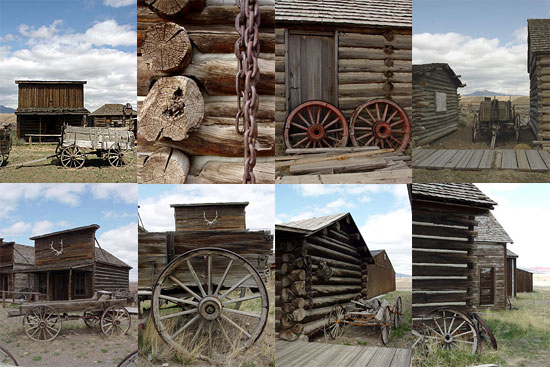 Bighorn Canyon is reminiscent of southern Utah’s red-rock country in parts. It was quite the surprise. Equally unexpected was the small herd of horses we stumbled across near Devil Canyon Overlook. A couple of foals and a handful of skittish mares bolted through the sage and galloped for the hills as we turned the corner. I raised my camera and clicked and then they were gone. I assumed falsely they were some nearby rancher’s nags that broke through the fence and were happily on the run, only to find out later these mustangs were as wild as the weather and fulltime residence of the Pryor Mountain Wild Horse Range, a 44,000 acre home to a small herd of 120-140 and managed by the BLM.
Bighorn Canyon is reminiscent of southern Utah’s red-rock country in parts. It was quite the surprise. Equally unexpected was the small herd of horses we stumbled across near Devil Canyon Overlook. A couple of foals and a handful of skittish mares bolted through the sage and galloped for the hills as we turned the corner. I raised my camera and clicked and then they were gone. I assumed falsely they were some nearby rancher’s nags that broke through the fence and were happily on the run, only to find out later these mustangs were as wild as the weather and fulltime residence of the Pryor Mountain Wild Horse Range, a 44,000 acre home to a small herd of 120-140 and managed by the BLM.
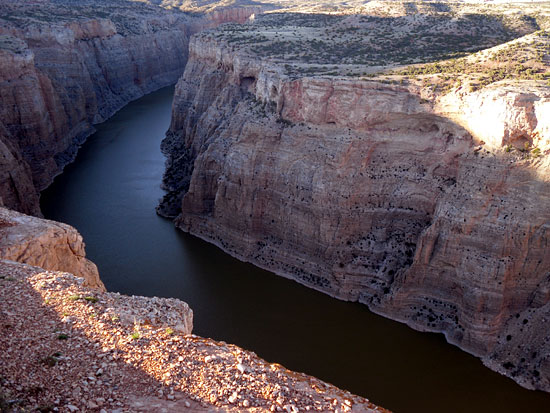 These aren’t your average horses. They’re genuine and highly unique Spanish Mustangs, direct descendants of those brought to the New World for Cortez’ invasion and conquest of Mexico. Called the North American Spanish Horse, or the “True Indian Pony,” protecting these splendid animals has been a real challenge. To this day, BLM’s wild horse management policy causes stress and anxiety not only for the horses, but also for those who seek to protect the tiny herd from being rounded up, or “gathered,” and shipped off to the glue factory, or to France where horsemeat is considered to be (prepare to vomit) a delicacy.
These aren’t your average horses. They’re genuine and highly unique Spanish Mustangs, direct descendants of those brought to the New World for Cortez’ invasion and conquest of Mexico. Called the North American Spanish Horse, or the “True Indian Pony,” protecting these splendid animals has been a real challenge. To this day, BLM’s wild horse management policy causes stress and anxiety not only for the horses, but also for those who seek to protect the tiny herd from being rounded up, or “gathered,” and shipped off to the glue factory, or to France where horsemeat is considered to be (prepare to vomit) a delicacy.
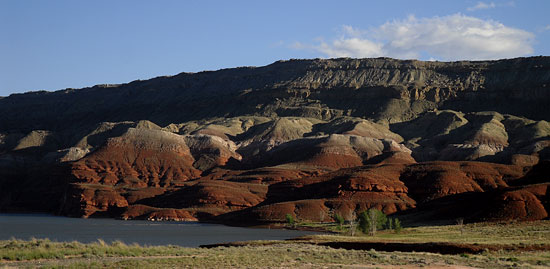 It’s a contentious issue. In 2009, 54 adults and 3 foals were gathered and made available for adoption through a competitive bidding process. The average bid was $525 and the high bid, $2,500. If you’re interested in adopting a wild mustang, contact the Pryor Mountains Wild Mustang Center in Lovell, Wyoming, and help keep our western heritage alive, and off the dinner table.
It’s a contentious issue. In 2009, 54 adults and 3 foals were gathered and made available for adoption through a competitive bidding process. The average bid was $525 and the high bid, $2,500. If you’re interested in adopting a wild mustang, contact the Pryor Mountains Wild Mustang Center in Lovell, Wyoming, and help keep our western heritage alive, and off the dinner table.
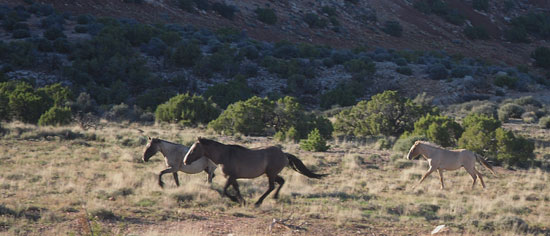
View Comments
John Treadwell Dunbar is a freelance writer